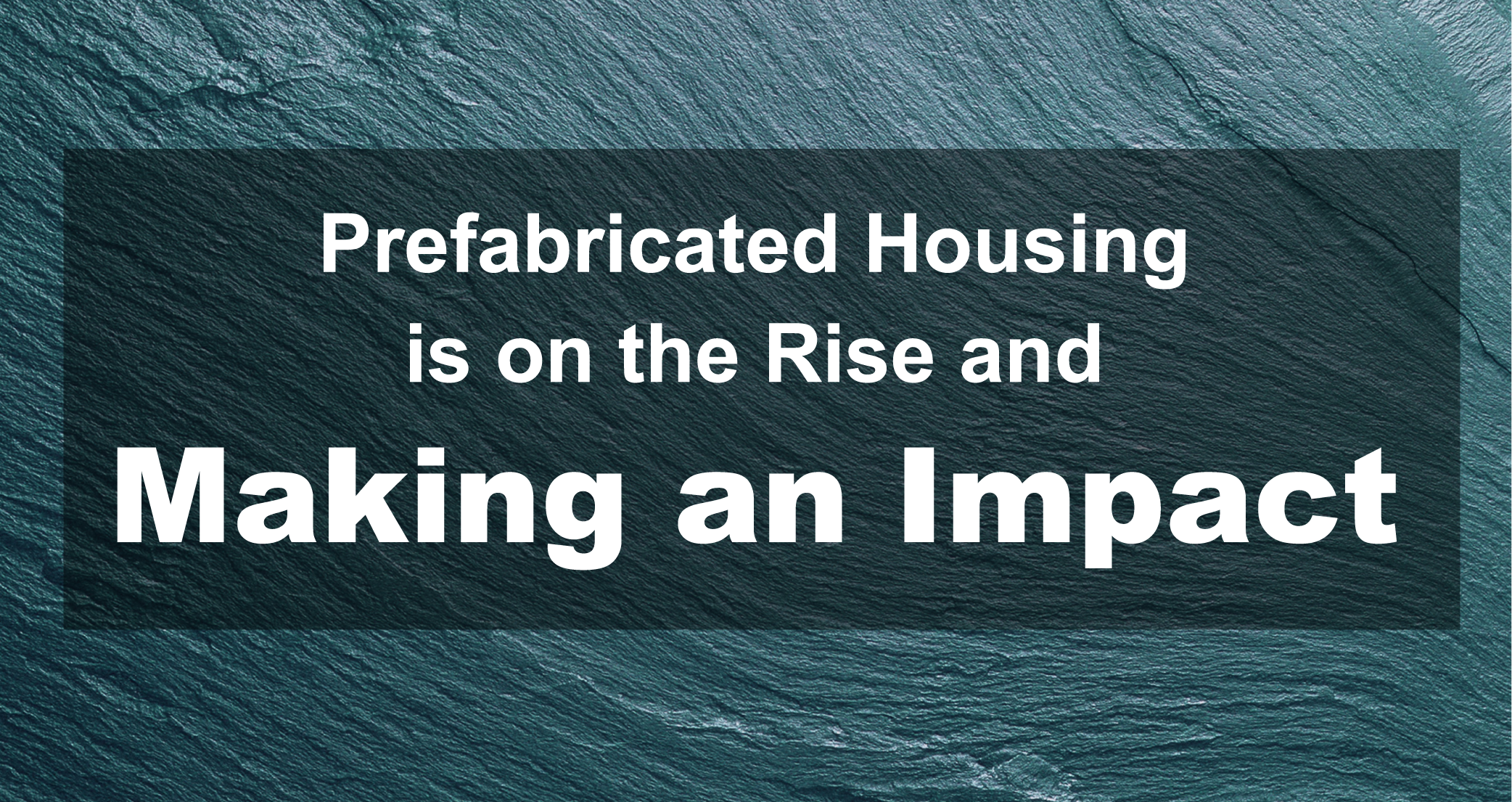Prefabricated Housing is on the Rise and Making an Impact
December 6, 2018

Prefabricated homes are one of the fastest growing forms of housing available to the American public these days, and there's a good reason for it too. As housing costs have risen across the board, prefab homes offer some relief for those who don't want to spend a fortune but want to own something of their own. Prefabricated housing is likely to play a bigger and bigger role in the future as we fight the rapidly rising cost of construction and other factors.
Why Prefabricated Housing?
Prefabricated housing is being used to address a wide range of issues with America's current housing shortage. Not only are these homes more affordable than traditional stick built homes, but they can also be manufactured faster. At the same time, public perception of manufactured homes is changing drastically, and more people see these homes as both viable and environmentally responsible options. Manufacturers of prefabricated homes have also done their part to update their catalogs with energy efficient, durable, and beautiful housing options that don't look out of place in average neighborhoods across the United States.
Prefabricated housing is solving a few other problems as well. For instance, the last recession forced countless construction companies out of business. As a result, construction workers flocked to other fields in search of work. As the economy has recovered, the demand for housing has grown but new construction companies have not sprung up fast enough to meet demand. In addition, natural disasters have wreaked havoc on the housing industry in affected areas, displacing thousands of people at a time. Prefabricated homes can be built in a factory at a rate several times faster than a traditional home. There are few delays for weather or other issues that can slow down a traditional construction team. Thus, prefabricated homes are making it to the public when no other options are readily available.
How Big is the Impact?
The impact of prefabricated homes can actually be measured over the last few years, and it is on the rise. In fact, nearly 86,000 new manufactured homes were shipped out in 2017 according to the US Census Bureau, a sharp rise from the 64,000 that were shipped in 2014. This stark increase has been fueled both by consumer demand and by changes to financing rules that have allowed lenders to offer more programs to help consumers get into the homes they really want.
When it comes to pricing, there is even more promising data. For instance, manufactured homes make up almost 70% of all homes under the $150,000 price point across the nation, and that the price per square foot for a prefabricated home can be as little as 60% of the price of a traditional home. To make things even more exciting, the average cost of a prefab home without land was actually just below the $70,000 mark!
In many areas around the country, low-cost undeveloped land can still be purchased for a few thousand dollars, making it possible to have a fully functional home for less than $100,000 altogether while remaining within reach of major cities and work centers.
Going forward, manufactured homes are going to play a major role in reducing the need for low-cost housing options and quicker construction. These homes have become far more popular in recent years due to changing trends toward practicality and low impact building, as well as the need for homes that reflect the vast differences in earnings potential and rising property costs around the nation. Plus, governments and lenders are turning to prefab homes to try and keep growth steady as we move into uncharted territory with our expanding economy.
